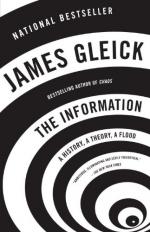
|
| Name: _________________________ | Period: ___________________ |
This quiz consists of 5 multiple choice and 5 short answer questions through Chapter 10.
Multiple Choice Questions
1. What claim did Shannon make about the predictable redundancy of the English language?
(a) That this feature could be computed.
(b) That this feature could cause programming to be very difficult.
(c) That this feature could cause errors.
(d) This this feature could not be computed.
2. What were the interests of Charles Babbage, a brilliant Englishman who lived in the 19th century?
(a) The history of discovery and travel.
(b) Mathematics, engineering, cryptography, railroads, and industrial machinery.
(c) Prose and poetry.
(d) Philosophy and psychology.
3. According to Psychologist George Miller, what type of process takes place in the mind relative to the information it receives?
(a) The rejection of too much information.
(b) The ranking of important to less important information.
(c) The selection of relevant information.
(d) The simplification of information.
4. What caused the errors that were contained in the tables of logarithms that had to be calculated themselves?
(a) Under-educated workers.
(b) Calculations.
(c) Calculations and printing errors.
(d) Printing errors.
5. What was the main form of communication in the late 1940s?
(a) Special couriers.
(b) Letters.
(c) The telegraph.
(d) The telephone.
Short Answer Questions
1. At an exclusive meeting in New York City, Shannon commented that the English language had what characteristic?
2. What type of information is contained in DNA?
3. What process can measure the limits of the human mind?
4. What was Claude Shannon fascinated with?
5. How was "A Table Alphabeticall" intended to help people?
|
This section contains 290 words (approx. 1 page at 300 words per page) |

|




